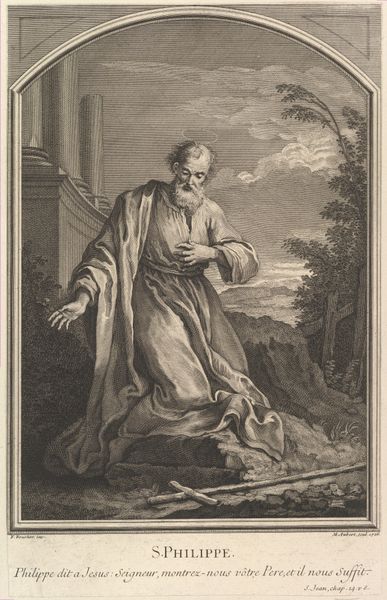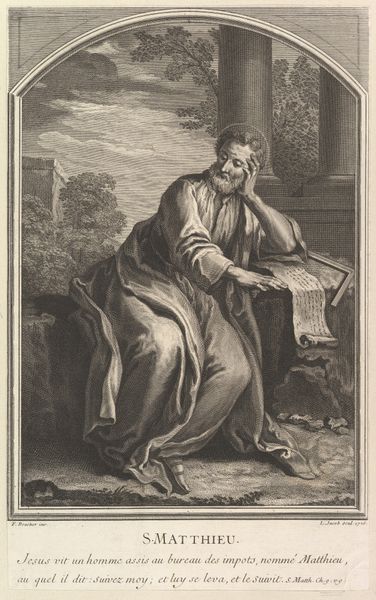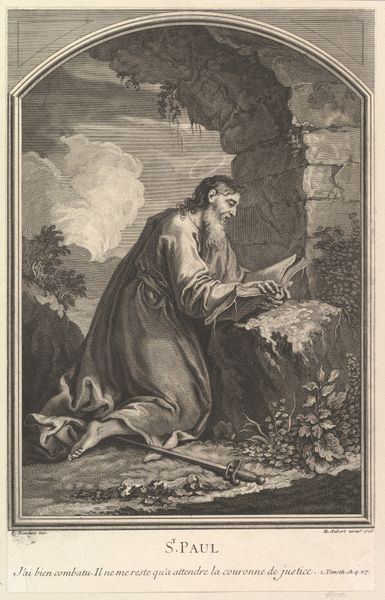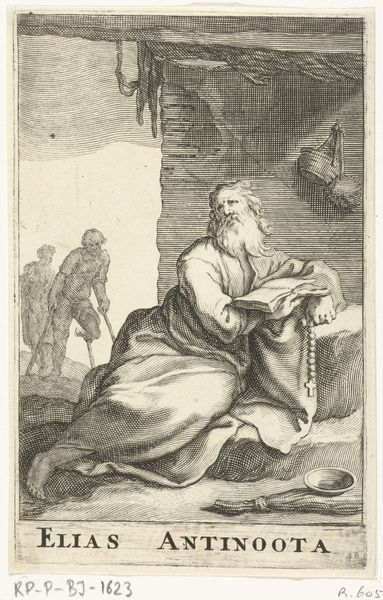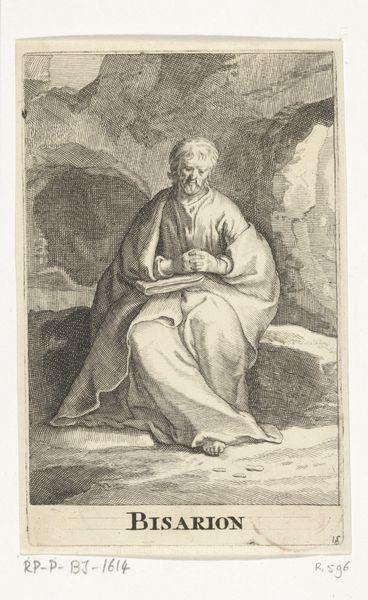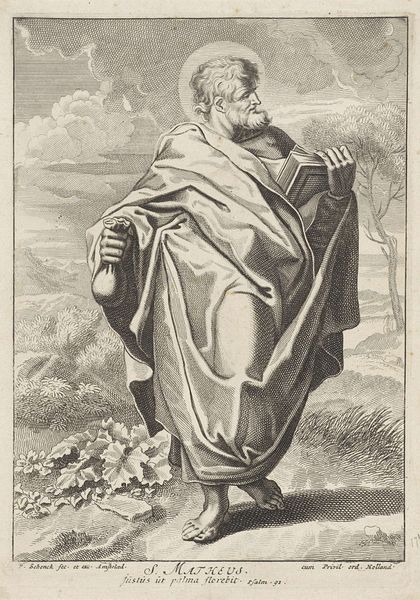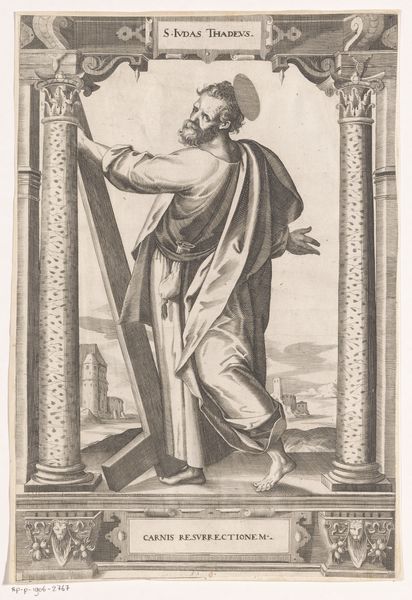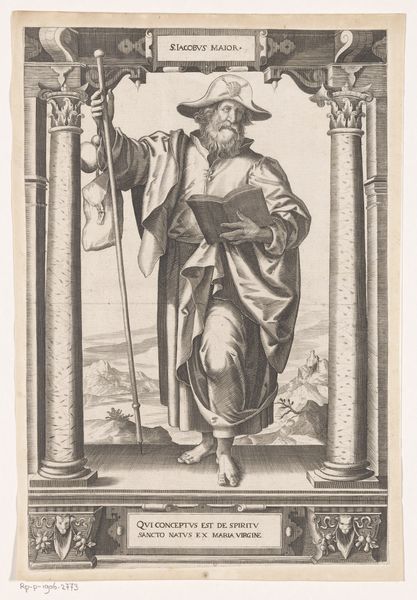
drawing, print, engraving
#
portrait
#
drawing
#
baroque
# print
#
old engraving style
#
history-painting
#
engraving
Dimensions: Sheet (trimmed): 13 1/2 × 8 11/16 in. (34.3 × 22.1 cm)
Copyright: Public Domain
Editor: This engraving from 1726 by Jean-Baptiste Haussard, titled "Saint Pierre," is so striking. It has an air of repentance. The rooster on the wall, Peter's downcast gaze, and that single key. What symbols stand out to you in this piece? Curator: The "Saint Pierre" engraving, rich in Baroque drama, resonates with visual echoes of faith and fallibility. Consider the rooster – not merely a barnyard fowl, but a stinging reminder of Peter's denial of Christ, a symbolic harbinger of guilt. Editor: I see, so the artist isn’t randomly inserting farm animals, here, there’s more than meets the eye? Curator: Indeed! Now, note the key held by Peter. It’s not just any key; it signifies the Keys to Heaven, entrusting him with spiritual authority. Yet, observe how Peter clutches the key. There is no glory, here. This is heavy with shame. What story does that key tell us now, amidst Peter's grief? Editor: The guilt and burden? The contrast between the promise of salvation and his very human failing is so strong. Is that a bible under him? Curator: Precisely. The book, nestled beneath him on the rock, is a foundation that perhaps is now undermined by the events that have passed. Haussard masterfully orchestrates these symbols, prompting us to confront the intertwined threads of faith, doubt, and redemption within ourselves. Editor: That makes me look at the piece very differently. It’s less about religious authority, more about the human condition. I initially saw it as a straightforward portrait, but there's a depth of meaning woven into every image. Curator: Precisely. Symbols create their own memory; this print calls to mind that our own legacies can hang in the balance between our greatest ideals and our most vulnerable moments.
Comments
No comments
Be the first to comment and join the conversation on the ultimate creative platform.
